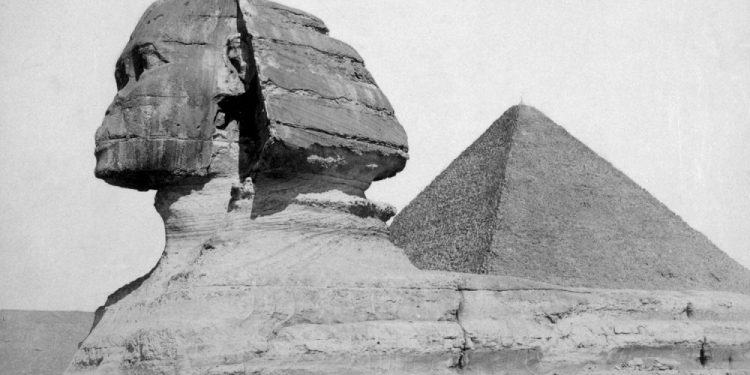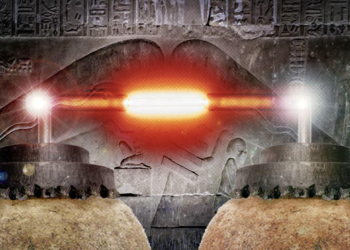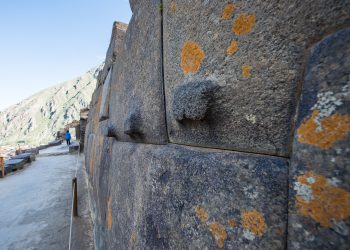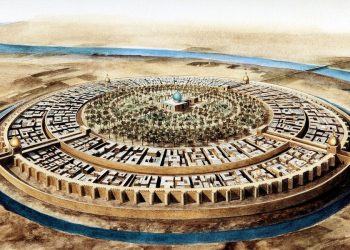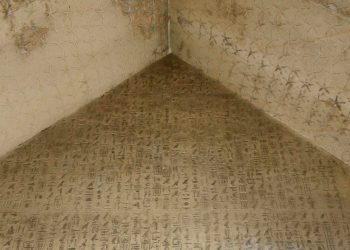Of all the ancient monuments built on Earth thousands of years ago, there is one that excites and causes confusion among scholars. Located in the arid landscape not far from Cairo, Giza’s Great Sphinx is a stone-made encyclopedia encompassing thousands of years of mystery. If it is a mysterious and incredible statue for us today, you shouldn’t be surprised to know that it was just like that for people in Egypt thousands of years ago.
Older than old?
That’s why some refer to the Sphinx of Giza as being older than ancient if that makes any sense. And that’s perhaps what best defines the Great Sphinx is that it’s a statue so old that even the ancient Egyptians referred to it as an ancient statue of a time long gone. Mainstream scholars have argued for decades about the imposing monument’s true purpose, origin, and meaning.
And although this massive statue has undergone countless restorations, some even thousands of years ago, we have not managed to solve its riddle. And the riddle of the Sphinx is a fascinating one. One so fascinating that even the best Egyptologists can only offer us theories about its origin and purpose. The truth is, some of them may be scared to say, “I don’t know.”
An ancient mystery
In the end, that’s the best answer when confronted with some of the greatest mysteries surrounding the Sphinx: we don’t know exactly who it was made for. We don’t know its purpose. Since we cannot radiocarbon date it, we don’t know its exact age. We don’t know what it may have looked like (exactly) when it was finished. And we don’t know whether it is even a part of the Pyramid complex at Giza. Simply put, there are way too many mysteries surrounding it, which is precisely what makes this monument unique and fascinating.
In my personal opinion, Egyptologist Miroslav Verner gives us a fascinating description of the Sphinx:
The Great Sphinx of Giza is more than simply a symbol of ancient and modern Egypt. It is the very embodiment of antiquity and mystery itself. Over the centuries, it has fired the imaginations of poets and scientists, adventurers and travelers. Although it has often been measured, described, investigated using the most up-to-date scientific-technical means, and discussed at special scientific conferences, fundamental questions remain unanswered: Who built it, when, and why? (234)
And Verner’s quote is perhaps what best defines this ancient sculpture; the very embodiment of antiquity and mystery itself.
Therefore, here are my five reasons why Giza’s Great Sphinx is the most mysterious monument on Earth.
We don’t know its name
We really don’t. Ask any Egyptologist what the ancient name of the Sphinx was, and he’ll come up with an ‘old’ name for the statue, but not necessarily a really ancient one. That’s because we don’t really know what the ancient Egyptians called the monument when it was completed.
According to mainstream Egyptologists, there are no written records that tell us what the name of the Sphinx was when it was completed around 4,500 years ago. The truth is, nobody knows the original name of the Spinx. The term “Sphinx” most likely originated around 2,000 after the statue was built. That’s a huge mystery. The statue is obviously impressive today, and it was even more when it was just finished thousands of years ago. We know it was important since it is the biggest Sphinx anywhere in Egypt, although it isn’t the only one.
So isn’t it strange that although there are hundreds of toms around Giza alone, not one hieroglyphic inscription dating back to the Sphinx’s supposed age mentions it? According to James Allen, an Egyptologist at Brown University, “The Egyptians didn’t write history, so we have no solid evidence for what its builders thought the Sphinx was. Certainly, something divine, presumably the image of a king, but beyond that is anyone’s guess.”
In my opinion, Allen is wrong. The Egyptians DID write history; they didn’t do as we would today. In fact, if you look at ancient Egypt today, you’ll notice that everything they built is a piece of history written or carved in stone. It is up to us to decipher and try to understand what the ancients were telling us, just as we did with hieroglyphics and Coptic.
In the New Kingdom, the Sphinx was revered as the solar deity Hor-em-akhet and the pharaoh Thutmose IV (1401–1391 or 1397–1388 BC) specifically referred to it as such in his “Dream Stele.” Medieval Arab writers, mentioning the Sphinx thousands of years after it was built, referred to it as balhib and bilhaw.
It is ancient; we don’t know how much
Some have referred to the Sphinx as the most ancient monument in Egypt. The truth is, we don’t know. It may very well be really ancient, or it may date back to the Fourth Dynasty and Pharaoh Khafre. The question of who built the enigmatic Sphinx at Giza has baffled Egyptologists for a long time. The Sphinx may very well be more than 4,500 years old, or it may be just that, some 4,500 years old, dating back to the reign of Khafre.
French archaeologist Auguste Mariette discovered a statue of Khafre hidden beneath the ruins of a monument he discovered adjacent to the Sphinx that would later be named the Valley Temple. This statue, from black volcanic rock, was one of the clearest pieces of evidence that connected Khafre with the Sphinx, according to Egyptologists. But despite finding “telltale signs” that may or may not tell us who built the Sphinx, there isn’t a single valid explanation that can tell us just how old the statue is. The Sphinx is so old that even the ancient Egyptians found it buried beneath the sand.
Khafre’s Sphinx?
The idea that Khafre was the one who commissioned the Great Sphinx is one of the most widely accepted theories.
In 1949, Egyptologist Selim Hassan explained:
Taking all things into consideration, it seems that we must give the credit of erecting this, the world’s most wonderful statue, to Khafre, but always with this reservation: that there is not one single contemporary inscription which connects the Sphinx with Khafre; so, sound as it may appear, we must treat the evidence as circumstantial, until such time as a lucky turn of the spade of the excavator will reveal to the world a definite reference to the erection of the Sphinx.
Half a decade later, renowned Egyptologist Mark Lehner would conclude that it had to be Khafre who commissioned the Sphinx, based on eight points he presented in a paper in 2002 titled “Giza As Is: Unfinished Business Reveals the Human Hand.” Lehner explains, among other things, that the Sphinx Temple, the Sphinx, as well as the Valley temple, belong to one monumental construction phase attributed to Pharaoh Khafre:
Same style—Walls of the Sphinx Temple and Khafre Valley Temple were built of the same large limestone core blocks with harder red granite as a finish. Khufu’s Pyramid Temple was not built with monolithic core blocks.
Nearly identical court design and dimensions—Sphinx Temple and Khafre’s upper Pyramid Temple are the same design, except the upper temple had 12 instead of 10 colossal statues, and there isn’t any evidence of colossal statues in the Khufu mortuary temple.
Sphinx Temple and Sphinx ditch left unfinished—This suggests that they were the last major structures to be worked on in the area. The Khafre Valley Temple was nicely finished inside and out.
Same quarry and construction sequence—The Sphinx and Sphinx Temple were part of the same sequence. Sphinx Temple Blocks originate from the lower bedrock layers is the Sphinx Ditch.
Shared terrace—Khafre’s Valley Temple sits on the same leveled terrace as the Sphinx Temple. The fronts and backs of the temples are nearly aligned.
Walls Parallel—The Sphinx’s Temple’s south wall is parallel to the Valley Temple’s north wall, showing the same deviation north of due west. The Sphinx Temple builders must have adjusted it to the existing Khafre Valley Temple.
Sphinx ditch—The south side of the ditch is the north side of the foundation of the Khafre causeway, just where it enters the Khafre Valley Temple. The Sphinx ditch was sunk along the south side of the causeway that already existed.
Drainage Channel—Runs along the north side of the Khafre causeway and opens into the upper southwest corner of the Sphinx ditch. It looks like the ancient quarrymen formed the Sphinx ditch after the Khafre causeway. Otherwise, they would not have the drain empty into the Sphinx ditch.
Join the discussion and participate in awesome giveaways in our mobile Telegram group. Join Curiosmos on Telegram Today. t.me/Curiosmos



